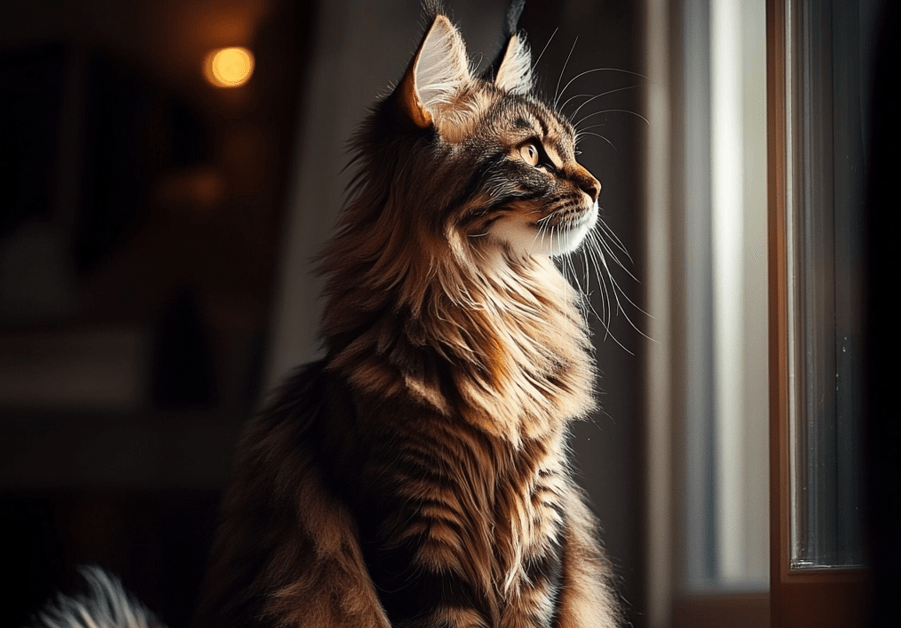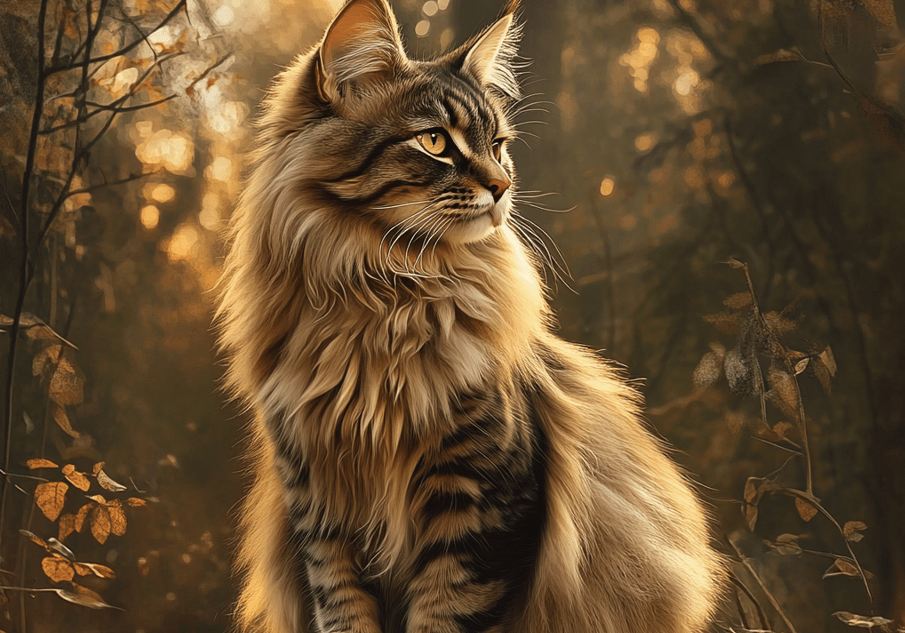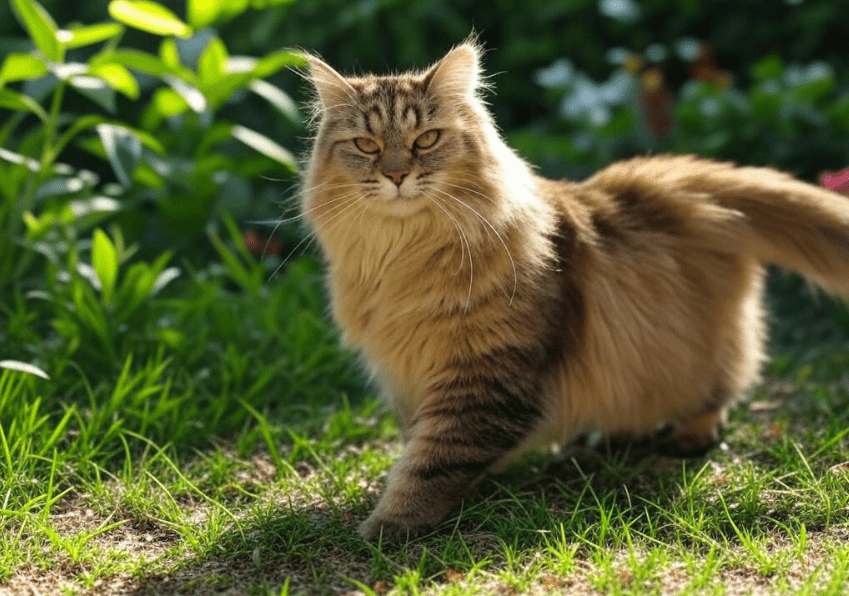
Brushes for Maine Coon fur maintenance are essential tools for keeping this majestic breed’s luxurious, long-haired coat in top condition. Maine Coons, known as “gentle giants” for their large size and friendly demeanor, have thick, water-repellent fur that requires regular grooming to prevent matting, reduce shedding, and maintain a healthy shine. Choosing the right brush can make grooming a bonding experience while ensuring your Maine Coon looks and feels their best. This comprehensive guide explores the best brushes for Maine Coon fur maintenance, offering expert recommendations, grooming tips, and techniques to keep your cat’s coat pristine.
Why Maine Coon Fur Maintenance Matters
Maine Coons have a distinctive double-layered coat: a soft undercoat for insulation and a longer, shaggy topcoat for protection. This unique fur, combined with their active lifestyle, makes regular grooming essential for several reasons:
Prevents Matting: Tangled fur can cause discomfort and skin irritation if not addressed.
Reduces Shedding: Regular brushing minimizes loose hair around your home.
Promotes Skin Health: Brushing stimulates blood flow and distributes natural oils for a healthy coat.
Prevents Hairballs: Grooming removes loose fur that could be ingested during self-grooming.
Strengthens Bonding: Grooming sessions build trust and affection between you and your Maine Coon.
Proper fur maintenance also allows you to check for skin issues, parasites, or abnormalities, ensuring your cat’s overall health.
Understanding Maine Coon Coat Characteristics
Before selecting brushes for Maine Coon fur maintenance, it’s helpful to understand their coat’s unique traits:
Double-Layered Fur: The dense undercoat traps warmth, while the longer guard hairs repel water and dirt.
Texture Variations: Fur is longer on the belly, ruff, and tail, and shorter on the shoulders and legs.
Shedding Patterns: Maine Coons shed moderately year-round, with heavier shedding in spring and fall.
Tufted Paws and Ears: Extra fur between toes and on ear tips requires gentle grooming.
Polydactyly: Some Maine Coons have extra toes, which may affect paw grooming.
These characteristics influence the type of brush best suited for your Maine Coon’s grooming needs.
Types of Brushes for Maine Coon Fur Maintenance

Choosing the right brush depends on your Maine Coon’s coat condition, grooming goals, and your cat’s comfort. Below are the most effective brush types for Maine Coon fur maintenance:
1. Slicker Brushes
Description: Flat or curved brushes with fine, short wire bristles designed to remove loose fur and detangle.
Best For: General grooming, removing mats, and smoothing the coat.
Benefits: Effective for the dense undercoat and long guard hairs, reduces shedding, and stimulates skin.
Considerations: Use gently to avoid scratching the skin, especially on sensitive areas like the belly.
2. Dematting Combs
Description: Combs with serrated or bladed edges to cut through mats and tangles.
Best For: Severe matting or heavy shedding seasons.
Benefits: Safely removes knots without pulling, ideal for the ruff and tail.
Considerations: Requires careful use to avoid cutting the skin; not for daily grooming.
3. Undercoat Rakes
Description: Wide-toothed combs with long, rounded teeth to reach the undercoat.
Best For: Thick undercoats and seasonal shedding.
Benefits: Removes loose undercoat fur without damaging the topcoat, reducing hairballs.
Considerations: Choose a rake with teeth spaced for your Maine Coon’s coat density.
4. Pin Brushes
Description: Brushes with long, flexible pins (often with rounded tips) for gentle grooming.
Best For: Finishing touches, smoothing the topcoat, and sensitive areas.
Benefits: Adds shine, detangles lightly, and is comfortable for cats.
Considerations: Less effective for heavy matting or undercoat removal.
5. Bristle Brushes
Description: Soft, natural, or synthetic bristles for polishing the coat.
Best For: Final grooming to distribute oils and enhance shine.
Benefits: Gentle on skin, ideal for cats sensitive to slicker brushes.
Considerations: Not suitable for detangling or heavy shedding.
6. Grooming Gloves
Description: Gloves with rubber or silicone nubs to collect loose fur during petting.
Best For: Skittish Maine Coons or light grooming sessions.
Benefits: Mimics petting, reduces stress, and collects fur easily.
Considerations: Less effective for deep grooming or matting.
7. Flea Combs
Description: Fine-toothed combs for removing fleas, dirt, or debris.
Best For: Checking for parasites and grooming sensitive areas like the face.
Benefits: Precise and gentle, helps monitor skin health.
Considerations: Not designed for general coat maintenance.
Top Recommended Brushes for Maine Coon Fur Maintenance
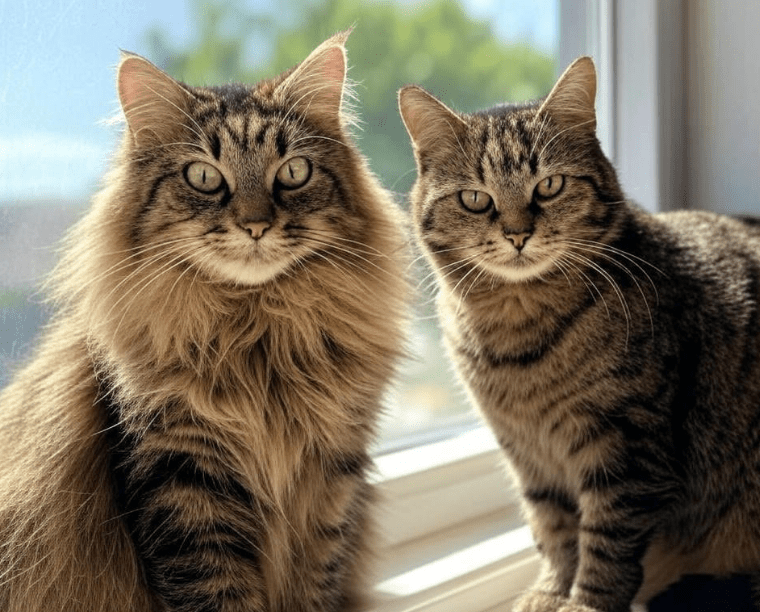
Based on effectiveness, durability, and Maine Coon-specific needs, here are the best brushes for Maine Coon fur maintenance (always check for availability and consult reviews before purchasing):
1. Safari Self-Cleaning Slicker Brush
Type: Slicker Brush
Why It’s Great: Retractable pins make cleaning easy, and fine bristles tackle mats and loose fur effectively.
Best For: Daily grooming and shedding control.
Tip: Use light, short strokes to avoid skin irritation.
2. Furminator Undercoat Deshedding Tool
Type: Undercoat Rake
Why It’s Great: Removes up to 90% of loose undercoat fur, ideal for heavy shedding seasons.
Best For: Seasonal shedding and thick undercoats.
Tip: Use 1–2 times per week to avoid over-grooming the topcoat.
3. GoPets Dematting Comb
Type: Dematting Comb
Why It’s Great: Dual-sided with rounded blades for safe mat removal, comfortable grip for owners.
Best For: Stubborn mats in the ruff or tail.
Tip: Work slowly and reward your cat to keep them calm.
4. Hertzko Soft Pet Brush
Type: Pin Brush
Why It’s Great: Flexible pins with rounded tips provide gentle grooming, perfect for finishing.
Best For: Smoothing the coat and sensitive areas.
Tip: Pair with a slicker brush for comprehensive grooming.
5. JW Pet GripSoft Bristle Brush
Type: Bristle Brush
Why It’s Great: Soft bristles enhance shine and distribute oils, ergonomic handle for comfort.
Best For: Final grooming and sensitive cats.
Tip: Use after detangling for a polished look.
6. Pet Republique Cat Grooming Gloves
Type: Grooming Gloves
Why It’s Great: Collects loose fur during petting, ideal for nervous Maine Coons.
Best For: Light grooming and bonding.
Tip: Use as a supplement to other brushes for deeper grooming.
7. Safari Flea Comb
Type: Flea Comb
Why It’s Great: Fine teeth catch fleas and debris, perfect for face and paw grooming.
Best For: Parasite checks and delicate areas.
Tip: Use weekly to monitor skin health.
How to Choose the Best Brush for Your Maine Coon
Selecting the right brush depends on your Maine Coon’s coat, temperament, and grooming needs. Consider these factors:
Coat Condition: Heavy matting requires a dematting comb, while light shedding benefits from a slicker brush.
Cat’s Sensitivity: Nervous or sensitive cats may prefer grooming gloves or soft bristle brushes.
Shedding Level: High shedding calls for an undercoat rake like the Furminator.
Frequency of Use: Daily grooming needs a versatile slicker brush, while occasional deep grooming may use a rake.
Ergonomics: Choose brushes with comfortable grips to reduce hand fatigue during long sessions.
Durability: Invest in high-quality brushes to withstand frequent use on a Maine Coon’s thick coat.
Test different brushes to find the combination that works best for you and your cat.
Step-by-Step Guide to Grooming a Maine Coon’s Fur
Using the right brushes for Maine Coon fur maintenance is only part of the equation. Follow this step-by-step grooming process for optimal results:
Step 1: Prepare Your Maine Coon
1.Choose a calm time, such as after a meal or nap, when your cat is relaxed.
2.Set up a quiet, well-lit grooming area with a non-slip surface (e.g., a table or lap).
3.Have treats, a pheromone diffuser, and all brushes ready.
4.Let your Maine Coon sniff the brushes to reduce fear.
Step 2: Start with Gentle Brushing
1.Use a grooming glove or pin brush to gently stroke your Maine Coon, acclimating them to the session.
2.Begin at the head and work toward the tail, following the fur’s natural direction.
3.Pay attention to sensitive areas like the belly and legs, using lighter pressure.
Step 3: Tackle the Undercoat
1.Switch to a slicker brush or undercoat rake to remove loose fur from the undercoat.
2.Use short, gentle strokes, focusing on high-shedding areas like the back and sides.
3.For heavy shedding, use a deshedding tool like the Furminator, but limit to 1–2 times per week.
Step 4: Address Mats and Tangles
1.Use a dematting comb for any mats, starting at the edges and working inward to avoid pulling.
2.Focus on the ruff, tail, and belly, where matting is common.
3.If mats are severe, consult a professional groomer to avoid skin injury.
Step 5: Finish with Polishing
1.Use a bristle brush or pin brush to smooth the topcoat and distribute natural oils.
2.Brush in the direction of hair growth for a shiny, polished look.
3.Gently groom tufted paws and ear tips, checking for debris.
Step 6: Check for Issues
1.Inspect the skin for redness, fleas, or lumps during grooming.
2.Clean any dirt or debris from the coat with a flea comb or damp cloth.
3.Reward your Maine Coon with treats or play to end on a positive note.
Step 7: Maintain a Routine
1.Groom your Maine Coon 2–3 times per week, increasing to daily during shedding seasons.
2.Keep sessions short (10–15 minutes) to avoid overwhelming your cat.
3.Monitor coat condition and adjust brush types as needed.
Tips for Effective Maine Coon Fur Maintenance
To make grooming with brushes for Maine Coon fur maintenance a success, incorporate these expert tips:
Start Young: Introduce grooming to kittens to build lifelong tolerance.
Be Patient: If your Maine Coon resists, start with short sessions and gradually increase duration.
Use Positive Reinforcement: Offer treats, praise, or play to create positive associations.
Clean Brushes Regularly: Remove fur from brushes after each session to maintain effectiveness.
Monitor Skin Health: Look for signs of allergies, infections, or parasites during grooming.
Combine Tools: Use a slicker brush for daily maintenance, a rake for shedding, and a bristle brush for shine.
Stay Consistent: Regular grooming prevents matting and reduces shedding over time.
Common Grooming Challenges and Solutions
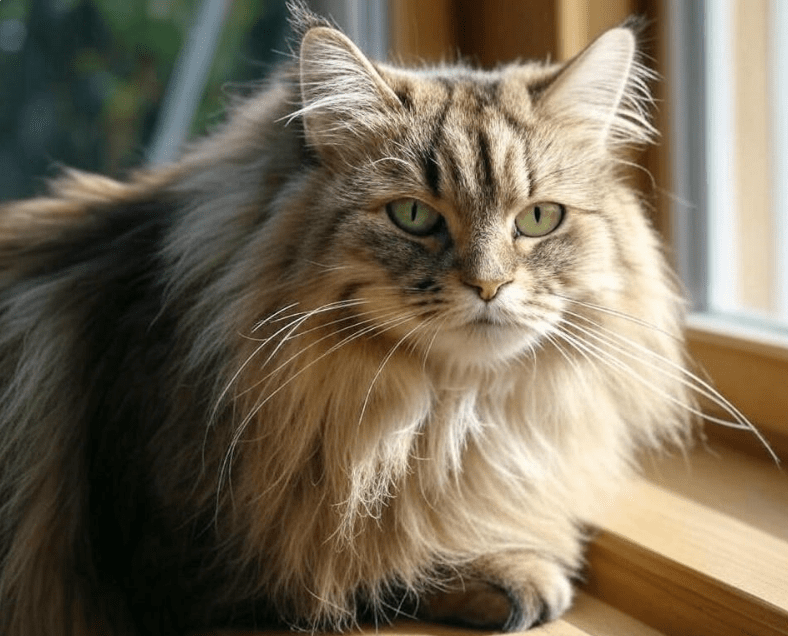
Grooming a Maine Coon’s thick coat can present challenges. Here’s how to address them:
1. Resistance or Aggression
Issue: Your Maine Coon swats, hisses, or tries to escape.
Solution: Use grooming gloves initially, take breaks, and reward calm behavior. Consult a professional if resistance persists.
2. Severe Matting
Issue: Mats are too tight or close to the skin to remove safely.
Solution: Avoid cutting mats with scissors; seek a professional groomer or veterinarian for safe removal.
3. Excessive Shedding
Issue: Loose fur overwhelms your home despite brushing.
Solution: Increase grooming frequency, use a deshedding tool, and check for dietary or health issues with your vet.
4. Sensitive Skin
Issue: Your Maine Coon reacts to brushing with discomfort.
Solution: Switch to a softer brush (e.g., bristle or pin) and use lighter pressure. Check for skin conditions.
5. Nervousness
Issue: Your cat is stressed or anxious during grooming.
Solution: Use pheromone sprays, keep sessions short, and groom in a quiet environment.
Complementary Grooming Practices
In addition to using the best brushes for Maine Coon fur maintenance, incorporate these practices for a healthy coat:
Bathing: Bathe your Maine Coon every 4–6 weeks with a cat-safe shampoo to remove dirt and excess oils. Brush before and after to prevent matting.
Diet: Feed a high-quality diet rich in omega-3 fatty acids, biotin, and protein to support coat health.
Hydration: Ensure access to fresh water to maintain skin and coat hydration.
Flea and Tick Prevention: Use vet-recommended treatments to protect the coat from parasites.
Regular Vet Checkups: Annual exams can catch skin or coat issues early.
When to Seek Professional Grooming
1.While at-home grooming is sufficient for most Maine Coons, professional help may be needed if:
2.Mats are severe or close to the skin.
3.Your Maine Coon is highly resistant or aggressive during grooming.
4.Skin issues, fleas, or infections are present.
5.You’re unsure how to groom sensitive areas like tufted paws or ears.
6.A professional groomer or veterinarian can provide expert care and guidance tailored to your Maine Coon.
Benefits of Regular Maine Coon Fur Maintenance
Consistent grooming with the right brushes offers numerous benefits:
Healthier Coat: Reduces matting, shedding, and hairballs for a shiny, vibrant coat.
Comfort: Prevents discomfort from tangles or skin irritation.
Cleaner Home: Minimizes loose fur on furniture and floors.
Stronger Bond: Grooming sessions build trust and affection.
Early Detection: Helps you spot skin issues, parasites, or lumps before they become serious.
Conclusion

The best brushes for Maine Coon fur maintenance are vital tools for keeping your cat’s iconic coat healthy, tangle-free, and beautiful. By selecting the right brushes—such as slicker brushes, undercoat rakes, or grooming gloves—and following a consistent grooming routine, you can ensure your Maine Coon stays comfortable and happy. This comprehensive guide equips you with the knowledge, tools, and techniques to make grooming a rewarding experience for both you and your gentle giant. Whether you’re a new or seasoned Maine Coon owner, these insights will help you maintain your cat’s coat with confidence.
For personalized advice or if grooming challenges arise, consult a veterinarian or professional groomer. With the right care, your Maine Coon’s luxurious fur will continue to shine, reflecting their health and your dedication.

